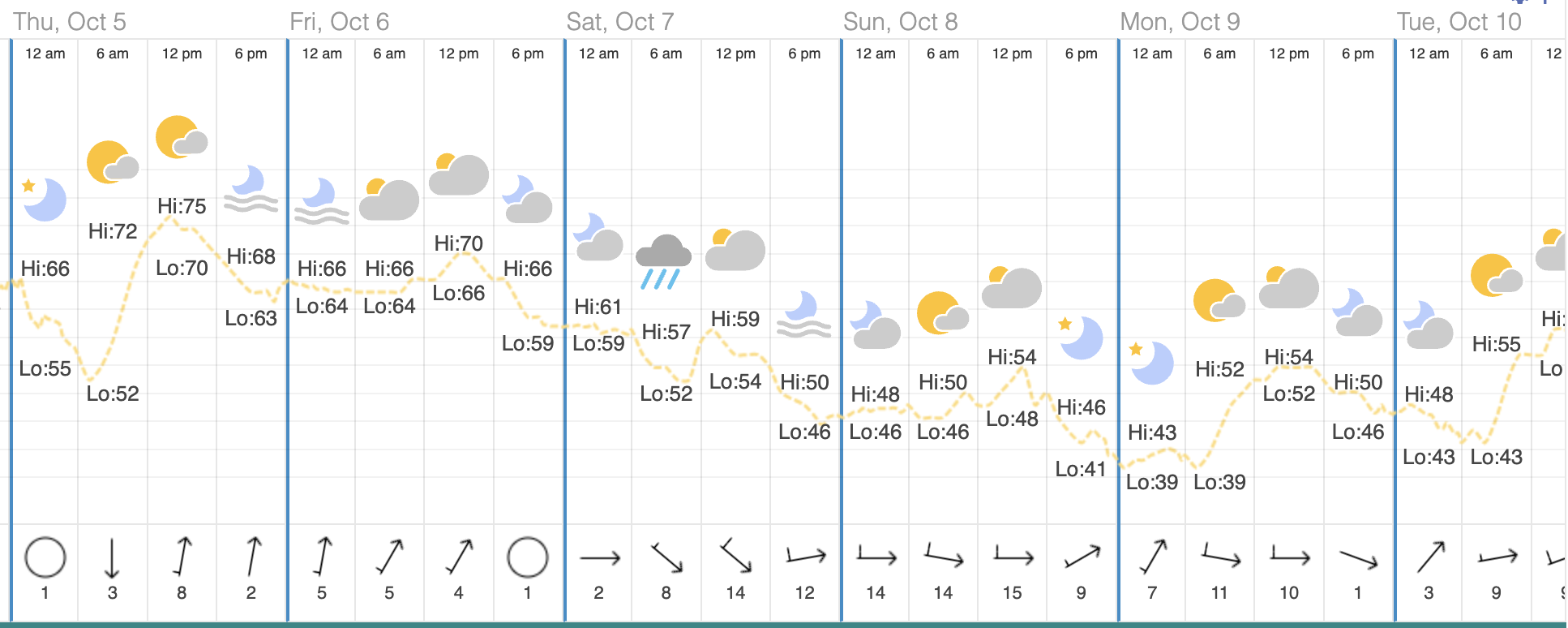Before our 15 minutes of fame, I was tackling the burning question of cold front passage and deer movements. [Note – there was an error in the graph the day of the cold front, October 7. I’ve updated the graph and post (the last graph presented). It didn’t change much, but you may want to go back and review it.]
One reader asked if I could provide a graph of their movements averaged across all deer. Very astute, and that’s what I do here!
Below is a graph of the average movement of our sample of collared bucks for 28 September – 4 October, 2 days before (5 October), and 1 day before (6 October) the front moved across the state. The colors correspond to the dates (see legend), and the points are the average speed for all deer at that hour and each line is a smoothed regression line. The exact same data as the graphs in the last post.
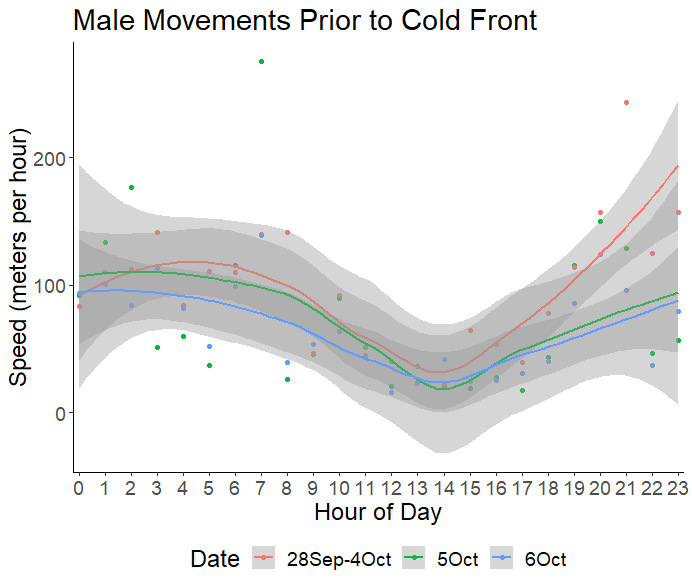
So now let’s add in the day it rained – Saturday, October 7.
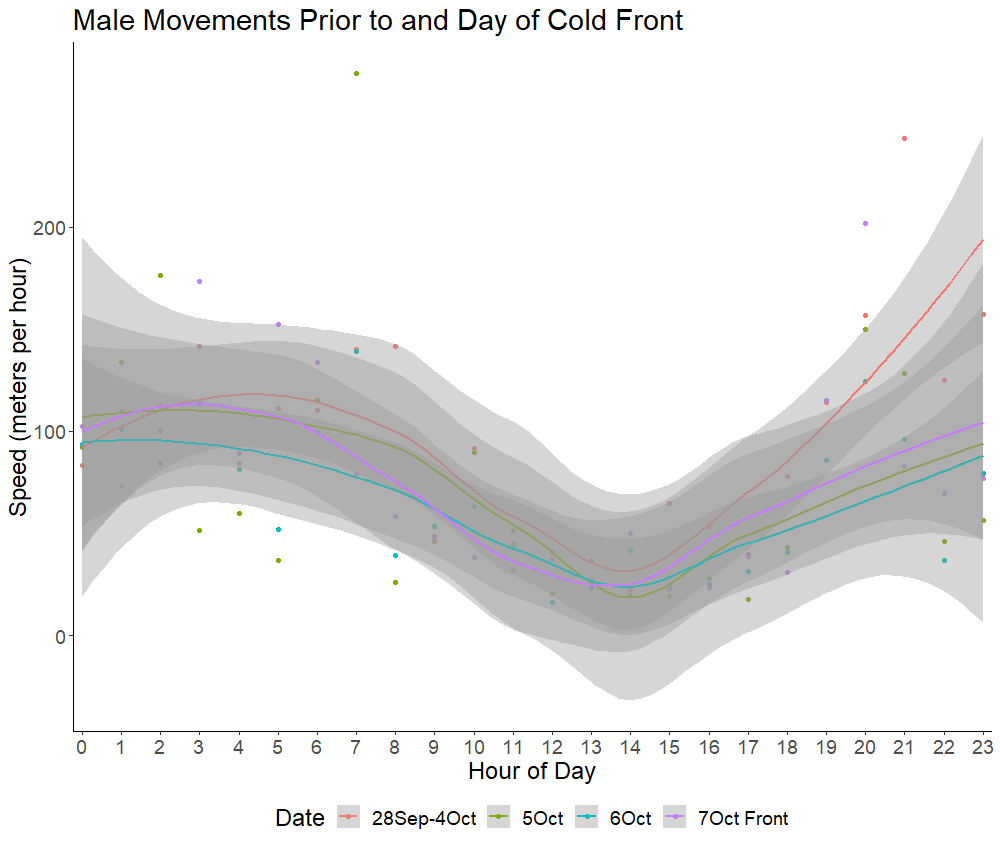
Hmmm….. the average movement isn’t really any different. Some deer didn’t move very much that day, but some did and so the average is just, I guess, average.
But after the front what did they do?! Here’s a graph of Sunday and Monday by individual deer.
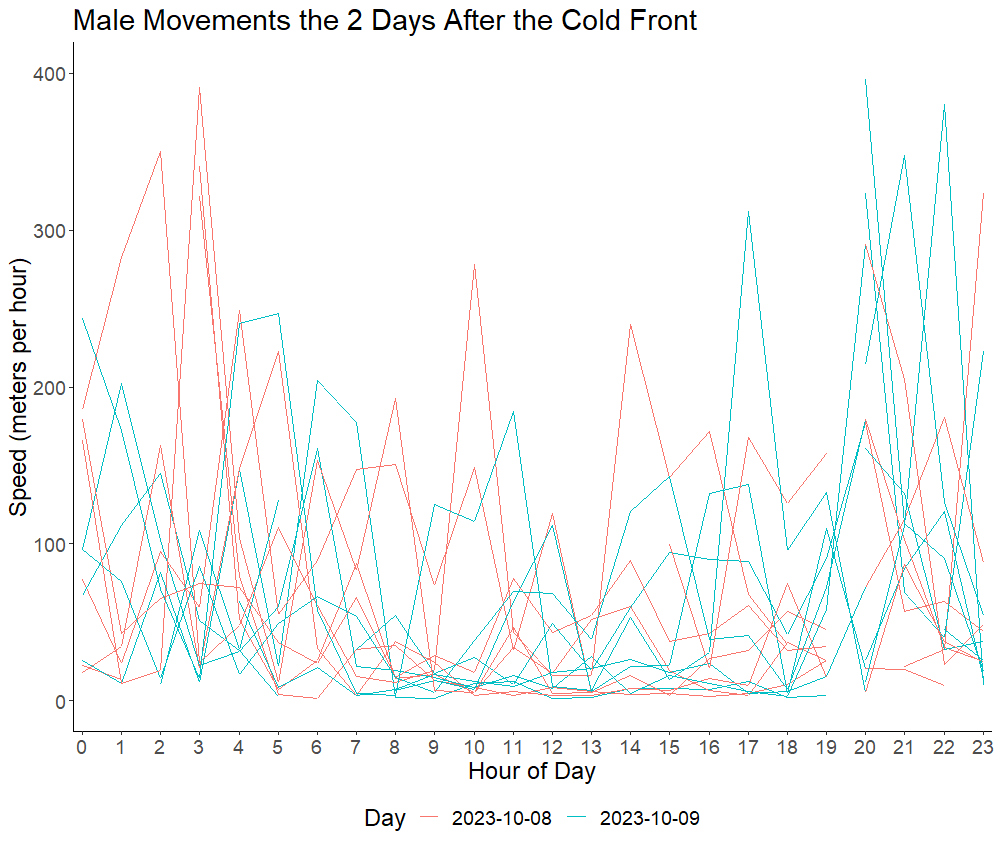
Lot’s of variability! Let’s smooth this out and add it to our previous graph.
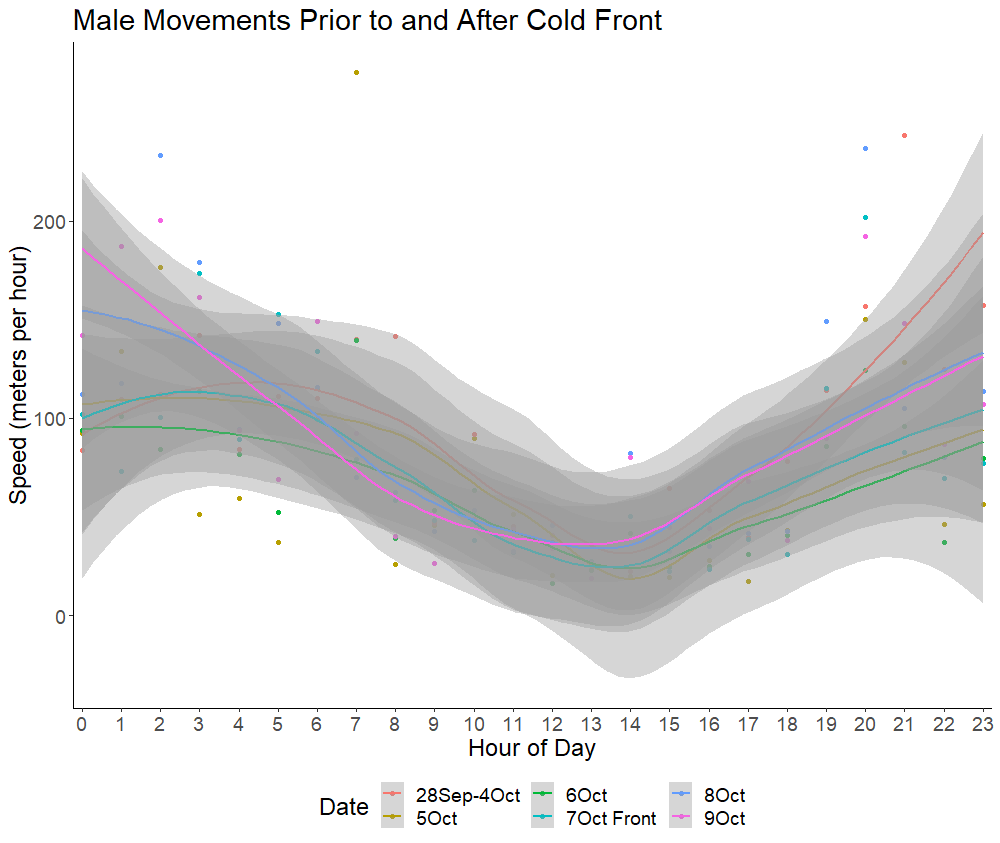
I don’t know about you, but this doesn’t give me a very warm and fuzzy feeling about cold fronts and deer movements. Maybe they move more at night? This little investigation doesn’t provide much insight for deer hunters.
Deer may respond to cold fronts but we likely would need a lot more data to tease out any effect. As you can see from the graphs in the previous post, from one deer to the next there is huge variability in their movements.
That’s the challenge of ecological research – we’re not splitting atoms with a billion-dollar particle accelerator, we’re imperfectly observing a very complicated system with almost no control over the system we’re observing. Regardless of the gizmos like GPS collars and infrared cameras involved.
The effect of cold fronts on deer movements is soon to be null and void, however. The days are getting shorter and that’s what signals the breeding season. Regardless of the weather or the temperature, does will be entering estrous and that’s what drives buck behavior and movements.
It’s fun and frustrating! But if we knew how to pattern deer (buck or doe), we wouldn’t need to study them and hunters wouldn’t need to hunt them.
-Duane Diefenbach
*Featured image at top of page is of past weather as presented by timeanddate.com. Go here if you’d like to see the weather for the month of October 2023 in State College and during the time this blog post covered deer movements..
